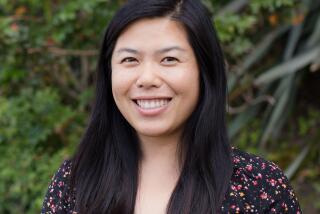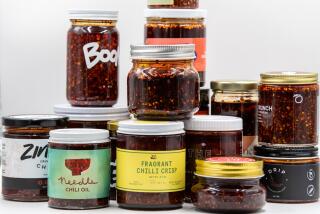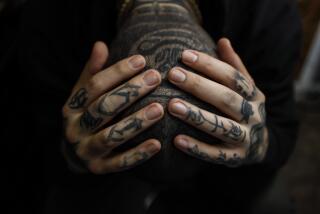Asian Americans and the ‘model minority’ myth
Previews of Amy Chua’s forthcoming book, “The Triple Package” (co-written with husband Jed Rubenfeld), detonated a social media uproar among Asian Americans. Many were infuriated by the New York Post’s report that Chua, the self-styled Tiger Mom, was identifying eight superior “cultural” groups in the United States: Jewish, Indian, Chinese, Iranian, Lebanese, Nigerian, Cuban and Mormon. For Asian Americans, the problem is about another Chua production that seems to perpetuate the “model minority” myth and, in particular, the notion that Asians are culturally — even genetically — endowed with the characteristics that enable them to succeed in American society.
Before the mid-20th century, the Tiger Mom did not exist in the national imagination. Instead, Americans believed that Chinese culture was disgusting and vile, viewing U.S. Chinatowns as depraved colonies of prostitutes, gamblers and opium addicts bereft of decency. Lawmakers and citizens deployed these arguments to justify and maintain the segregation, marginalization and exclusion of Chinese from mainline society between the 1870s and World War II. Those efforts were more than effective: to have a “Chinaman’s chance” at that time meant that one had zero prospects.
There is danger in offering culture as a formula for success, because our ideas of culture are hardly fixed. The history of Americans’ views about Chinese immigrant behaviors shows that “culture” often serves as a blank screen onto which individuals project various political agendas, depending on the exigencies of the moment.
During World War II, white liberals agonized that racism was damaging the United States’ ability to fight a war for democracy against the Axis powers. Many felt that the Chinese exclusion laws, which had barred migrants from China from entering the country or becoming naturalized citizens since the 1870s, risked America’s trans-Pacific alliance with China against Japan. A coast-to-coast campaign emerged to overturn the laws. The Citizens Committee to Repeal Chinese Exclusion recognized that it would have to neutralize deep-seated fear of “yellow peril” coolie hordes. So it strategically recast Chinese in its promotional materials as “law-abiding, peace-loving, courteous people living quietly among us.” Congress repealed the Chinese Exclusion Act in 1943.
In the 1950s, journalists, social scientists and policymakers recycled this fledgling idea, circulating it further and wider as they groped for a solution to what they perceived as a national juvenile delinquency crisis. The New York Times Magazine emphasized that Chinese youths displayed “unquestioned obedience” toward their elders, while Look magazine celebrated their “high moral sense.” U.S. Rep. Arthur Klein of New York praised his Manhattan Chinatown constituents for their “respect for parents and teachers,” “stable and loving home life” and thirst for education.
These narratives gained traction because they upheld two dominant lines of Cold War-era thinking. The first was the valorization of the nuclear family. Popular portrayals of Chinese American households that attributed their orderliness to Confucian tradition resonated with contemporary conservative mores. The second was anti-communism. Observers who lauded stateside Chinese and their “venerable” Confucianism effectively drew contrasts between U.S. Chinatowns and Mao Tse-tung’s China to suggest that superiority of the American way of life.
By the 1960s, the concept of strong, disciplined families became the basis of the new racial stereotype of Chinese Americans as “model minorities”: domestic exemplars, upwardly mobile and politically docile. In the midst of the black freedom movement of the 1960s, numerous politicians and academics and the mainstream media contrasted Chinese with African Americans. They found it expedient to invoke Chinese “culture” to counter the demands of civil rights and black power activists for substantive change.
In 1966, then-Assistant Secretary of Labor Daniel Patrick Moynihan defended his controversial claim that the too-strong emphasis on matriarchy in black “culture” was to blame for the “deterioration” of African American communities by pointing to the “enlightened family life” of the relatively well-to-do Chinese. The magazine U.S. News & World Report unequivocally made the same charged comparison: “At a time when it is being proposed that hundreds of billions be spent to uplift Negros and other minorities, the nation’s 300,000 Chinese Americans are moving ahead on their own — with no help from anyone else.”
Then, as now, Asian Americans were troubled by what they saw as untrue juxtapositions. For one, the stereotype glossed over the myriad difficulties their communities faced: poverty, drugs, suicide, mental illness. Ling-chi Wang warned in UC Berkeley’s Asian American Political Alliance newsletter (1968) that Chinatown’s problems “will forever be neglected by the government” unless the community liberated itself from “the tyranny of this Chinese myth.”
Moreover, critics disliked the ways in which ideas about Asian Americans reinforced the denigration of African Americans. Writing for Los Angeles-based Gidra magazine in 1969, Amy Uyematsu resented being implicated in “white racism” by being “held up” before other minority groups as a “model to emulate.”
Today, the “model minority” concept both fascinates and upsets precisely because it offers an unambiguous yet inaccurate blueprint for solving the nation’s most pressing issues. The obstacles Americans face in the global economy, our declining prospects for socioeconomic mobility and the uncertainty of parenting in difficult times — all are real challenges. But “culture” cannot explain “success” any more than it can serve as a panacea for the dilemmas of the new millennium.
We’ve heard enough of specious generalizations about “model minorities.” We need to see Asian Americans — and other racial, ethnic and religious groups — for what they are: dynamic, diverse and much more than one-dimensional stereotypes.
Ellen D. Wu, a history professor at Indiana University, is the author of “The Color of Success: Asian Americans and the Origins of the Model Minority.”
More to Read
A cure for the common opinion
Get thought-provoking perspectives with our weekly newsletter.
You may occasionally receive promotional content from the Los Angeles Times.










